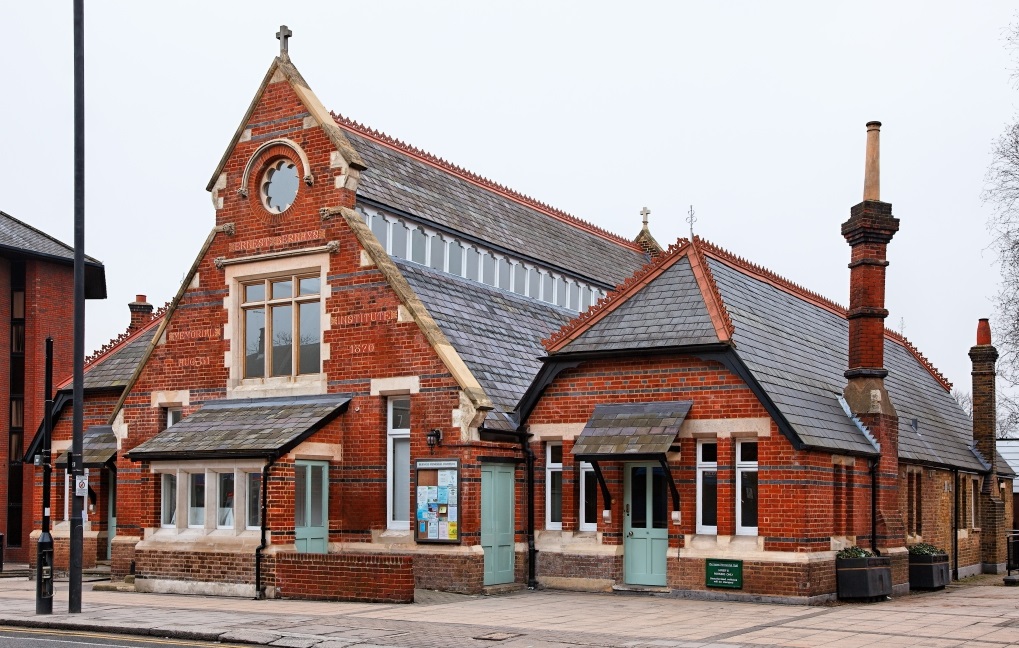Stanmore is home to a range of magnificent buildings with some truly impressive architecture, but The Bernays Memorial Institute is a wonderful example of a local Village Parish Hall, that just possesses a certain period charm, nestled between the more modern designs of a Sainsburys supermarket and Fanum house, the old AA building.
Origins
The building is named ‘Memorial’ as it was constructed to celebrate the memory of Ernest Bernays the eldest son of local rector, the Reverend Leopold Bernays. Leopold was rector of St. Johns church Stanmore from 1860 until 1883. His son Ernest was an undergraduate at New College, Oxford, and it was on 31 August 1870 whilst holidaying in Ireland that Ernest met a sudden and untimely death in a tragic accident while he was swimming in a lake in Glengarriff, County Cork. His body was repatriated to Stanmore and he was buried in the churchyard of St. John's on 6th September 1870, Ernest was just 22 years old
The hall is located on the corner of Stanmore Broadway and Glebe Road. The name Glebe refers to an area of land within an ecclesiastical parish which was used to support a parish priest. At the time the hall was built, Stanmore had some 15 acres of Glebe land which was owned by St. Johns church.
Records show that on April 8th 1871, part of this parcel of Glebe land was sold by Leopold on behalf of the church commissioners for "the erection of any messuage or buildings to be used as a library or reading or lecture rooms" for the education and recreation of the inhabitants of the parish of Great Stanmore.
Leopold was not only the parish rector, he was also a chairman of the Stanmore Gas Company and had an interest in the Colne Valley Water Company. Both himself and his sons, Ernest and Stewart took an active part in local affairs and the family were very well thought of in the area
Leopold raised the £1,470 needed to build the institute and called in the eminent Victorian architect J.T. Barker to draw up the plans and oversee the project. The result is an ornate, Victorian, gothic church-like building of red brick with Bath stone dressings. Small windows or clerestory are inserted into a steeply sloping Welsh slate roof, which admits both light and ventilation. The roof is also decorated with ornamental hip and ridge tiles. Handmade terracotta tiles built into the front elevation record, "ERNEST BERNAYS MEMORIAL INSTITUTE, AUG 31 1870".
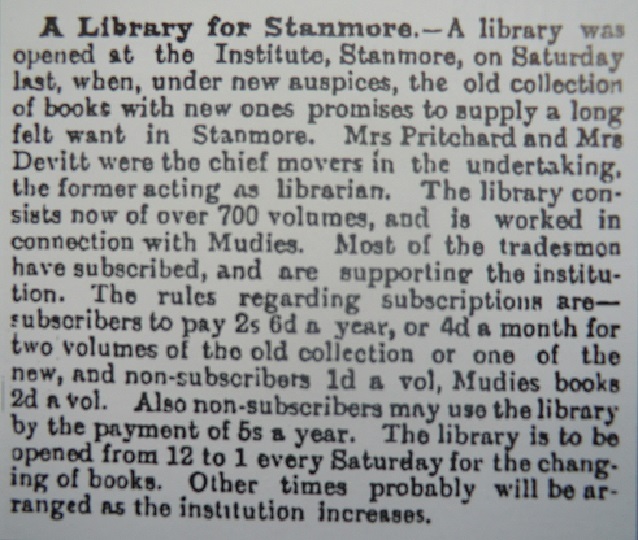
The hall was opened on 8th December 1871 by Lord George Hamilton, MP for Middlesex.
In its early days, being before the birth of cinemas and television the hall would host magic lantern shows which would delight and enlighten audiences. Bible classes were a regular occurrence held for both men and boys. The hall was also the home of the local village ‘Band of Hope’ Temperance Society. In Victorian Britain, local and national Temperance Society groups were founded to tackle the problem of excessive drinking in society. All members took a pledge of total abstinence and were taught the "evils of drink". With Stanmore being on one of the busy coach routes from London en route to the midlands we had a string of alehouses and inns througout the the village, and it is documented that after certain meetings the owners of hostelries and their clients were made known about the merits of sobriety.
The institute was used for dances and concerts and it was here that world renowned actress Charlotte Rampling made her first stage appearance
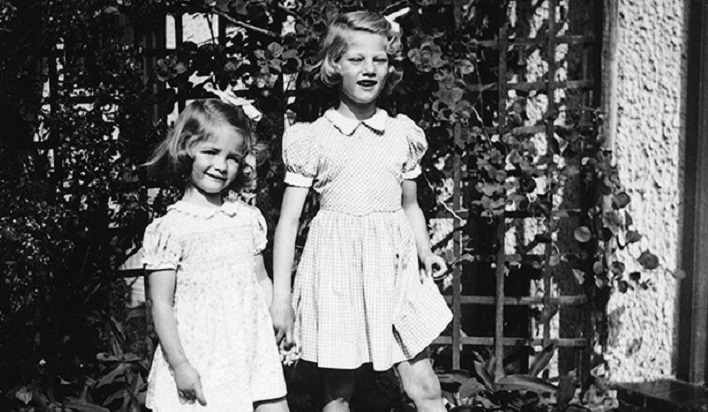
Charlotte Rampling
The actress Charlotte Rampling OBE started her stage career at the institute, for it was here when Charlotte was just 14 that she made her stage debut. Appearing with her older sister Sarah, singing French chansons. "We went down a treat," she remembers. "I had this incredible sensation. I thought, "I know where I'm going. This is where I have to be. This is what I have to do. I've found my way." After one such performance the sisters were talent-scouted and offered a nightclub audition in the West End. Her father, however, thought otherwise. When the prospect arose of his two girls taking their little show to London, he said, "over my dead body". Years later Charlotte would say “we were too young, although, of course, it was heart-breaking for us, we thought we were going to be cabaret stars. But to this day I have never forgotten that unsettling, thrilling feeling of being on stage in front of a live audience.”
Her father was Lieutenant Colonel Godfrey Lionel Rampling, an athlete and army officer who competed in the 1932 Summer Olympics. He also took part in the 1936 Olympics in Berlin winning a gold for Great Britain. In retirement he maintained his sporting interests by becoming secretary of Stanmore Golf Club. The Rampling family lived in a thatched cottage called Westwood, 24 Uxbridge Road.
Glebe Hall
Immediately after the first world war an army hut around the back of the institute was utilised by the Bernays trustees to provide a recreational club for women as part of the war memorial. Although the full title of this club was ’The hut for the wives of working men and ladies’ maids’ it was always known as the hut. Educational activities sports and entertainment were provided. As the number of ladies’ maids declined in later years the hall was neglected and practically derelict by 1965, the year when the local branch of the National Council of women was formed. This group needed a meeting place in order to expand and the Bernays trustees agreed to let them have it provided they maintained it. The NCW reroofed refloored and repainted it and gave it a new name ‘Glebe Hall’. The NCW let it out to other groups, and held their own meetings there until 2004.
Stanmore Institute Club
Phone: 020 8954 0358
A working mans club was in existence by the 1890’s in a building alongside the main hall. Today the Stanmore Institute Club still flourishes and remains in the ownership of the Bernays trustees.
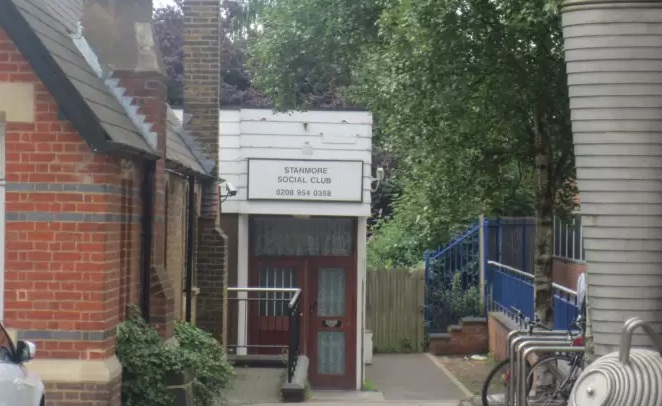
Potential closure and rebirth
In 1991 The building was saved from demolition, as a result of local popular pressure and from further deterioration by the formation of a volunteer management group. In 1993 the building was added to the Local List of buildings of Architectural and Historic interest. Once the property had been saved Campaigners spent 18 years raising money to restore the Bernays Memorial Hall, to its former glory. Volunteers raised £40,000 through appeals, collections and even selling marmalade, while just short of £200,000 came from renting out the hall over almost two decades. A further £10,000 came in a grant from the Harrow Heritage Trust, and the money was spent restoring the building inside and out.
During the four-month project the strategy was to employ traditional craftsmen and methods and to re-use original materials including the existing roof slates, selecting locally produced bricks which perfectly match the originals and salvaging dado rails, grilles and mouldings which would create an authentic feel. But when new materials or other resources had to be brought in special effort was made to stay true to the old designs. Special equipment had to be used to clean black out paint from World War Two off the windows and the stone surrounding them.
Carole Lis, who was treasurer of the Appeal Committee and is current manger of the hall said: “The groups that use the hall are astounded. It's the lynchpin of Stanmore. It's just so amazing that it is the focal point of the area once more after 40 years.” The restoration project was successfully completed on time and on budget, it finished 18 years after the building was saved from demolition and exactly 139 years later to the day, that it was originally built.
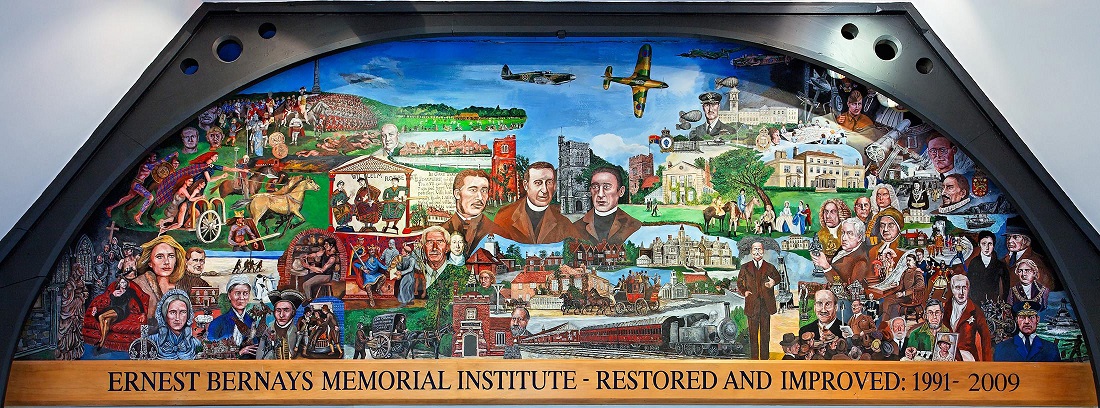
The Stanmore mural
This picture is on permanent display in the lobby of The Bernays Memorial Institute. This truly colossal piece of artwork spans the entire width of the room that is housing it, and covers the history of Stanmore life since the days of Boudica to the present day. The painting shows many famous landmarks and individuals, both past and present from the local area. The faces include of course members of the Bernays family, Queen Adelaide, who spent her final days in Bentley priory, Frederick Gordon architect of the Harrow to Stanmore railway and worlds greatest hotelier, William Knox D’Arcy, one of the principal founders and director of The Anglo-Persian Oil Company, which would later become BP, Charlotte Rampling child star of the Bernays institute and an icon of the Swinging Sixties, and Andrew Drummond, founder of the London bank Messrs Drummond, and owner of Stanmore Park, there are also two Prime Ministers, an Air Chief Marshal and an Admiral of the Fleet, as well as many other notable Stanmore residents.
The Mural was painted by local artist, Peter Williams in acrylics. The cost of the Mural was donated by Tony Noakes as a memorial to his first wife, Ruth. Next time you are passing why not pop in and have a look, and see how many you can you name?
Whether you’re walking, cycling or driving past the institute, you can’t help but notice the great number of different flags flying from its flagpole.
Flags unite people and are testaments to a group’s spirit, character, history, and pride, they create allegiances and give people a sense of belonging. There’s no better example of this than a national flag, which you will see regularly flying outside the institute. During the year you will also see the flags of the four patron saints, St. George for England, St. Andrew for Scotland, St. Patrick for Northern Ireland, and St. David for Wales flying, on their respective days, as well as events like Anzac Day, Battle of Britain Day and many more.
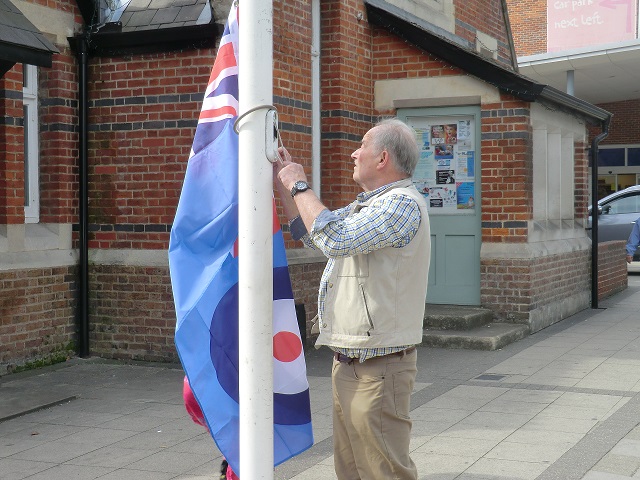
The sight of the RAF ensign raised high evokes stirring memories of brave young men in their Spitfires and Hurricanes, the ‘few’ to whom we owe so much. Here is it especially poignant, as Stanmore had two bases RAF Stanmore Park and RAF Bentley Priory, headquarters of fighter command and from where the Battle of Britain was Won.
Bernays Flag hoister is a long time Stanmore resident John Williams. John has been raising the different flags outside the institute for many years and has acquired quite a collection.
Hall for hire.
The main hall is an enormously versatile venue and offers an excellent space for your function. Whether it be a charity event or presentation, wedding reception or children’s party, social gathering or lectures.
During the day the hall is used for a huge variety of classes ranging from dance, martial arts, yoga, bridge and keep fit. You can see the current timetable of daytime and early evening classes by checking out their website.
So, if you are interested in hiring the hall or joining one of the many daily activities please do take a look at their website here.
